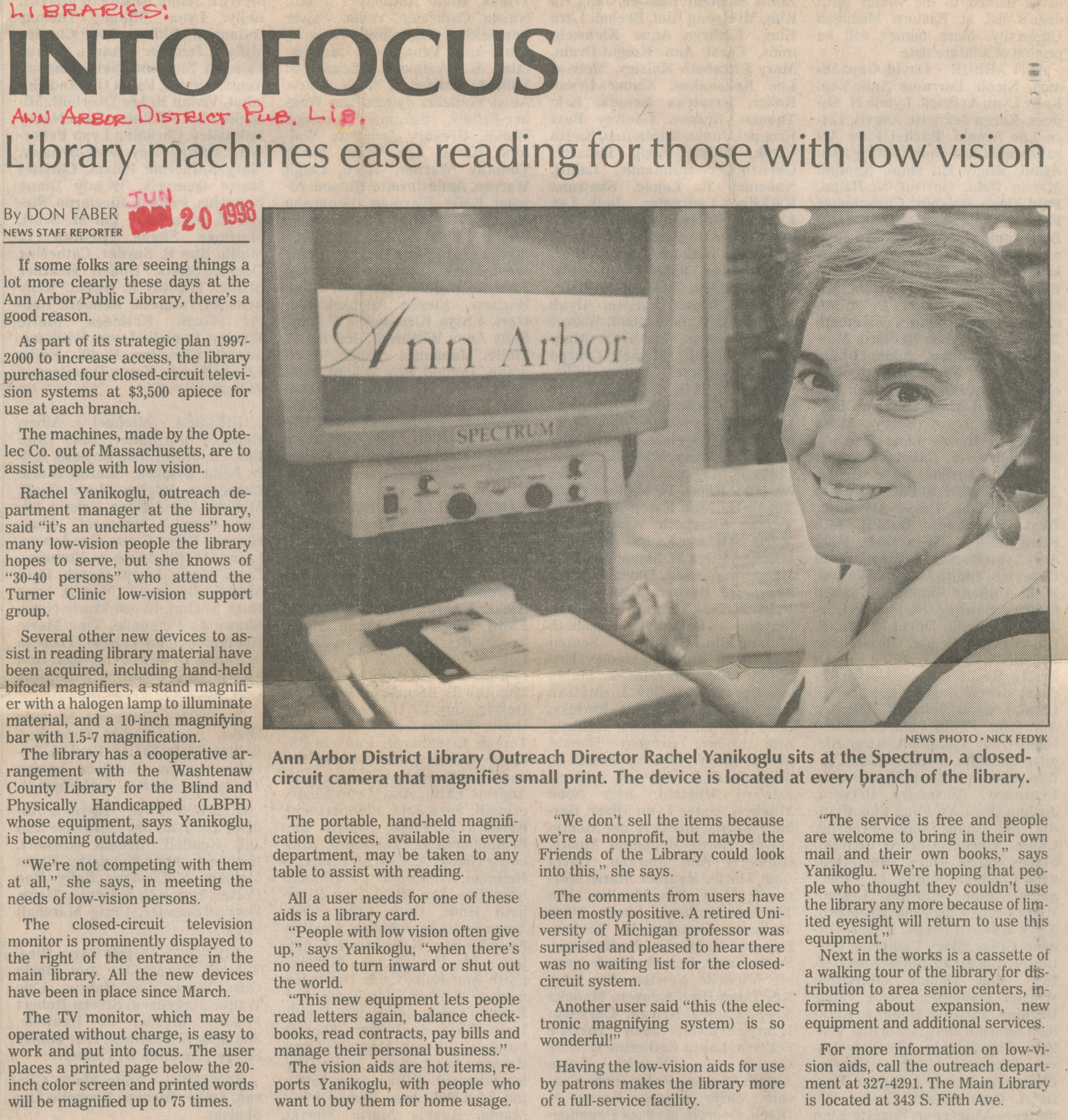Into Focus

Library machines ease reading for those with low vision
BY DON FABER
lf some folks are seeing things a lot more clearly these days at the
Ann Arbor Public Library, there's a good reason.
As Part of its strategic Plan 1997-2000 to increase access, the library purchased four closed-circuit television systems at $3,500 apiece for use at each branch.
The machines, made by the Opte-lec Co. out of Massachusetts, are to assist people with low vision.
Rachel Yanikoglu, outreadh department manager at the library, said "it's an uncharted guess" how many low-vision people the library hopes to serve, but she knows of "30-40 persons" who attend the Turner Clinic low-vision support group.
Several other new devices to assist in reading library materials have been acquired, including hand-held bifocal magnifiers, a stand magnifier with a halogen lamp to illuminate material, and a 10-inch magnifying bar with 1.5-7 magnification.
The library has a cooperative arrangement with the Washtenaw County Library for the Blind and Physically Handicapped whose equipment, says Yanikoglu, is becoming outdated.
"We're not competing with them at all,” she says, in meeting the needs of low-vision persons.
The closed-circuit television monitor is prominently displayed to the right of the entrance in the main library. All the new devices have been in place since March.
The TV monitor, which may be operated without charge, is easy to work and put into focus. The user places a printed page below the 20-inch color screen and printed words will be magnified up to 75 times.
The portable, hand-held magnification devices, available in every department, may be taken to any table to assist with reading.
All a user needs for one of these aids is a library card.
"People with low vision often give up," says Yanikoglu, "when there's no need to turn inward or shut out the world.
"This new equipment lets people read letters again, balance checkbooks, read contracts, pay bills and manage their personal business."
The vision aids are hot items, reports Yanikoglu, with people who want to buy them for home usage.
"We don't sell the items because we're a nonprofit, but maybe the Friends of the Library could look into this," she says.
The comments from users have been mostly positive. A retired University of Michigan professor was surprised and pleased to hear there was no waiting list for the closed-circuit system.
Another user said "this (the electronic magnifying system) is so wonderful."
Having the low-vision aids for use by patrons makes the library more of a full-service facility.
"The service is free and people are welcome to bring in their own mail and their own books," says Yanikoglu. "We're hoping that people who thought they couldn't use the library any more because of limited eyesight will return to use this equipment."
Next in the works is a cassette of a walking tour of the library for distribution to area senior centers, informing about expansion, new equipment and additional services.
For more information on low-vision aids, call the outreach department at 327-4291. The Main Library is located at 343 S. Fifth Ave.